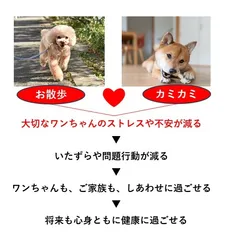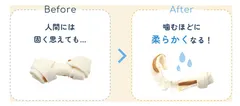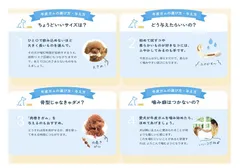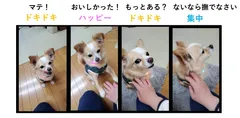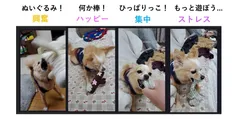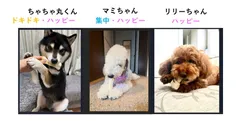Longer chewing" affects your dog's sense of well-being and concentration! and concentration of dogs! Report on an experiment using Inupathy, a device that reads the mind of a pet dog The report of the experiment using the device "Inupathy" to read the mind of a pet dog was published.
スペクトラム ブランズ ジャパン株式会社
The "Exploring More of Your Dog's Mind" project is a scientific exploration project conducted from April to May 2024 by DINGO, a pioneer brand of chewable treats (Spectrum Brands Japan K.K.; Headquarters: Yokohama, Kanagawa Prefecture), and Rangeless, Inc. (Head office: Sumida-ku, Tokyo; Representative Director: Kana Yamairibata; hereinafter referred to as "Langres"), which develops and sells a device called "Inupathy" to read the minds of pet dogs, conducted a scientific exploration project from April to May 2024.
Summary of the scientific exploration project
In this experiment, Spectrum Brands Japan (DINGO) and Langless jointly conducted research as part of the "Exploring More of Your Dog's Mind Project" to clarify the effects of chewing behavior on your dog's emotions. The study used Inupathy, a device that reads the mind of a pet dog, to analyze in detail the changes in happiness and stress experienced by dogs in their daily lives. In the experiment, 30 pairs of pet dogs and their owners were given "Inupathy" for 15 minutes a day for about 2 weeks to measure changes in the dogs' emotions when (1) they were given a favorite treat, (2) they were playing with a toy with their owners, and (3) they were given cow hide gum (DINGO), which they could enjoy for a long time.
[Key research findings.
We predicted that each dog and its owner has its own habitual toys and treats, and that each of these toys and treats has a different effect on the dog's mind and body. The results of the study showed that all of these foods had a certain degree of happiness. The results revealed that all of these affect a certain level of happiness, concentration, and stress, but the frequency of appearance of each emotion and the persistence of each emotion when it appeared differed.
[What is the correlation between chewing and emotion...?
Using "Inupathy," we have compiled data on emotional changes measured from a dog's heartbeat and other data, and found a clear link between chewing and happiness. In particular, it was observed that dogs felt less stress and experienced a happier mood longer during the time they spent chewing gum and other items. At first glance, chewing may seem like a behavior that should be discouraged, but the results suggest that dogs' natural chewing behavior is an instinctive need that should be fulfilled. The research team will continue to explore the well-being of dogs, with the aim of helping more dog owners better understand their dog's behavior and health.
[Chewing increases a dog's "happy"! Results show that it helps them focus and reduces stress."]
Result (1): "Longer chewing" cowhide gum was found to increase dogs' "Happy" the most.
→The number of dogs with high scores for "Happy" was overwhelmingly higher for cowhide gum.
Explanation: "Bovine chewing gum" showed the highest scores in both "Realtime" and "Process" analyses of happiness, indicating that the dogs felt stable happiness throughout the time they chewed the gum.
The "Happy" value for "treats" was the highest at the moment of "mate," when the dog's expectation is high, and the total amount of time was also low.
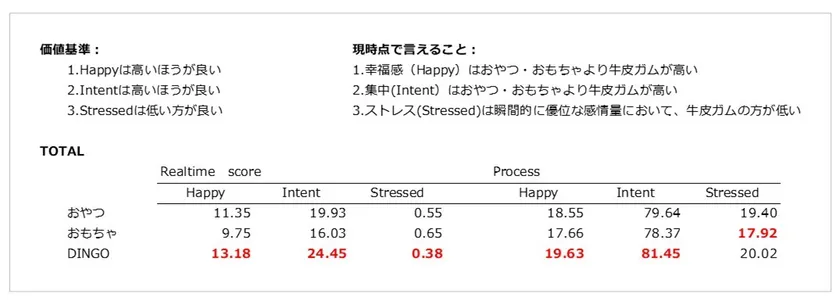
The value of "Happy" was higher for the cowhide gum than for the treats and toys.
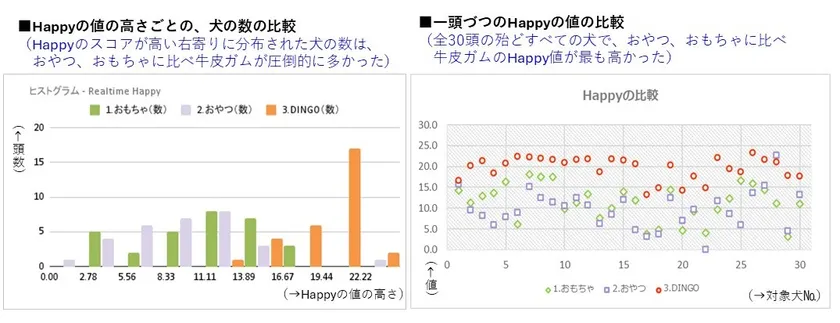
Comparison of "Happy" values for treats, toys, and cow hide gum
Examples of treats: jerky, dental gum, bolos, cookies, etc.
Examples of toys: Throwing toys, chewing toys, pulling strings, etc.
Result (2): "Chewing for a long time" brings about "concentration" more than treats or toys.
→ Realizes "time to be absorbed" which is said to be lacking in modern dogs
Explanation: "Cowhide gum" was overwhelmingly the most popular choice, with both the total amount of time and the moment of feeling "focused" being high. The very act of concentrating on something itself eliminates the need to be distracted by unnecessary stress, so we place great importance on the time dogs spend concentrating, and we believe there is value in being able to provide time for them to become engrossed even when alone. It is possible that 15 minutes was a long time for owners to keep playing with their dogs with toys and keeping treats around for a long time, but it is also an indication that the dog usually has a short amount of time to be engaged in something.
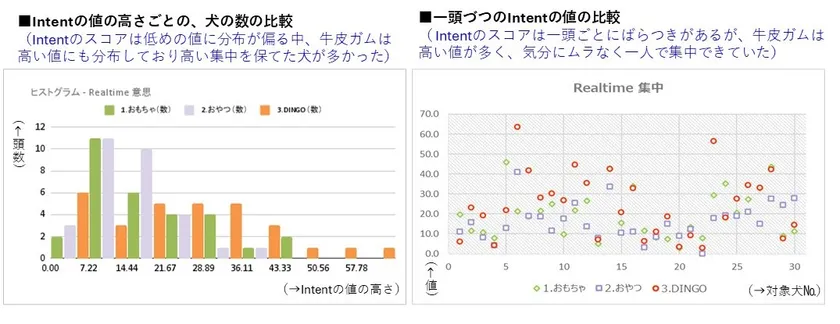
Comparison of "Intent" values for treats, toys, and cow hide gum
Result (3): "Stress" was lowest when dogs played with toys with their owners
→Toys that make the dog feel secure as usual do not cause outstanding stress.
Explanation: In the emotional analysis of inuopathy, "stress" in dogs is often measured "when they feel lonely and don't know what to do. It is not surprising that the stress level was low when the dog was playing with a familiar toy with a trusted owner.
In the case of the "cow hide gum," the stress in the emotional transition analysis was caused by worrying about how to attack it, while the cow hide gum showed the lowest stress in the emotional analysis that was the most dominant. It can be said that stress as a strong emotion did not emerge as a result of concentrated worrying. It is possible that the "treats" quantified the stress of not being able to satisfy the desire for more food.
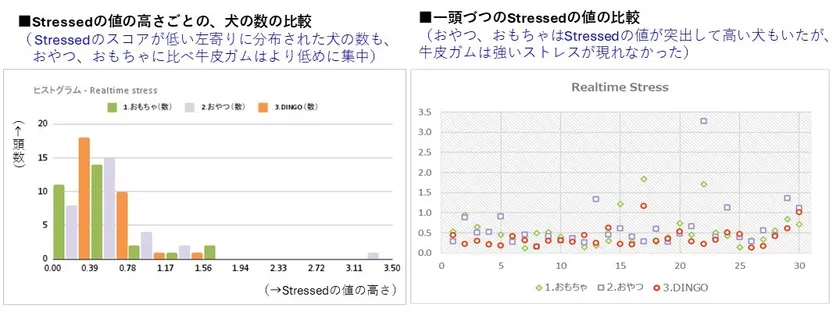
Comparison of "Stressed" values for treats, toys, and cow hide gum
The following is a comparison of the "Stressed" values of treats, toys, and cowhide gum.
(1) When treats were given
Some excerpts from the test participant's comments
Dried sweet potato treats: "Finished eating in about 3-4 minutes, then relaxed."
Jerky: "I want it! and rushed to eat it. When he was satisfied, he relaxed.
Turban roll: He asked to be nudged long after he ate it.
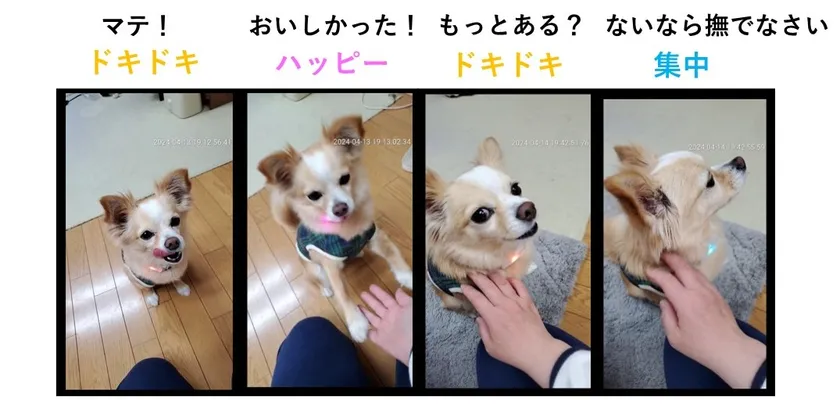
(1) When I gave him a snack
(2) When playing with a toy
Excerpts from test participants' comments
Cardboard chewing: He was in a happy mood and started to chew on it with his fingernails. When I thought he had calmed down, he invited me to play with another toy.
Tugging on a string: If we didn't stop him, he would have continued the game.
Favorite ball: I repeatedly threw it to him and made him fetch it. He seemed especially happy when he caught it without bouncing.
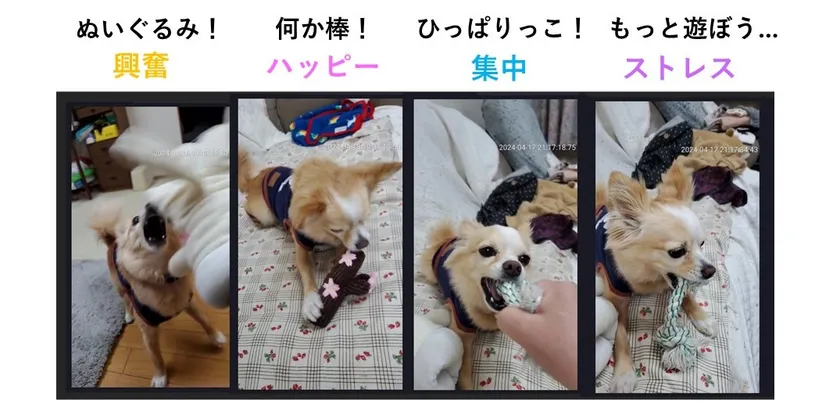
2When given a toy
(3) When given cowhide gum
Some excerpts from the test participants' comments
When I tried to give it to him, he looked a little scared because he was too serious, but when I gave it to him, he was mixed up between excited and happy.
He reacted happily just by sniffing the bag, and when he started eating, he showed his concentration and excitement, and he was just crazy about it.
While she was eating, she was so happy all the time that it made me feel happy too.
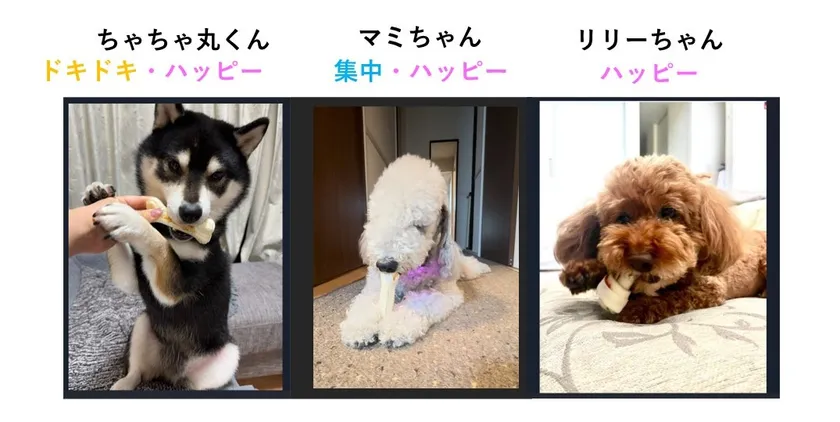
3When we gave them cowhide gum
■From these results, it seems that the secret to making your dog more stress-free and happy is to "keep him excited and focused for a long time. In fact, according to the experiment, "long, concentrated chewing" produced the best results.
However, for today's dog owners, "chewing" may be seen as "annoying" and "bothersome. Finally, we will introduce the importance of "chewing" for dogs and a typical "good-to-chew" product, cowhide gum.
Research and Considerations] (*1)
(1) Why Dogs Want to Chew Things: What We Can Learn from Dogs' Habits - From the Latest "Animal Behavioral Science
It is said that the ancestors of dogs were wolves. Wolves, which cooperated with their families to capture prey, became dogs, which worked with people as guard dogs and hunting dogs. In other words, dogs chew, bark, and spend time with their friends, just as they would with their family members, humans - this is the original and normal repertoire of dog behavior.
Since chewing is a dog's instinct, the dog learns to chew on things that interest it and, if there is fun to be had as a result, it will learn to play with them. In many cases, this is something the owner does not want the dog to chew, so chewing has become "chewing = annoying and troubling behavior.
Do you find that the owner reacts more when the dog is chewing on remote controls, slippers, furniture, etc., than when the dog is chewing on dog toys? Dogs are happy to see their owners react, and they will chew repeatedly.
The gnawing itself is not the problem, but the fact that the dog chews on something you do not want it to chew on, such as a remote control, is the problem. If you just forbid the behavior and suppress it, the dog will get frustrated and the problem will only get worse. Instead of forcing the dog to put up with the behavior, it is better to allow the dog to exercise its instincts, which will lead to "happiness" for the dog.
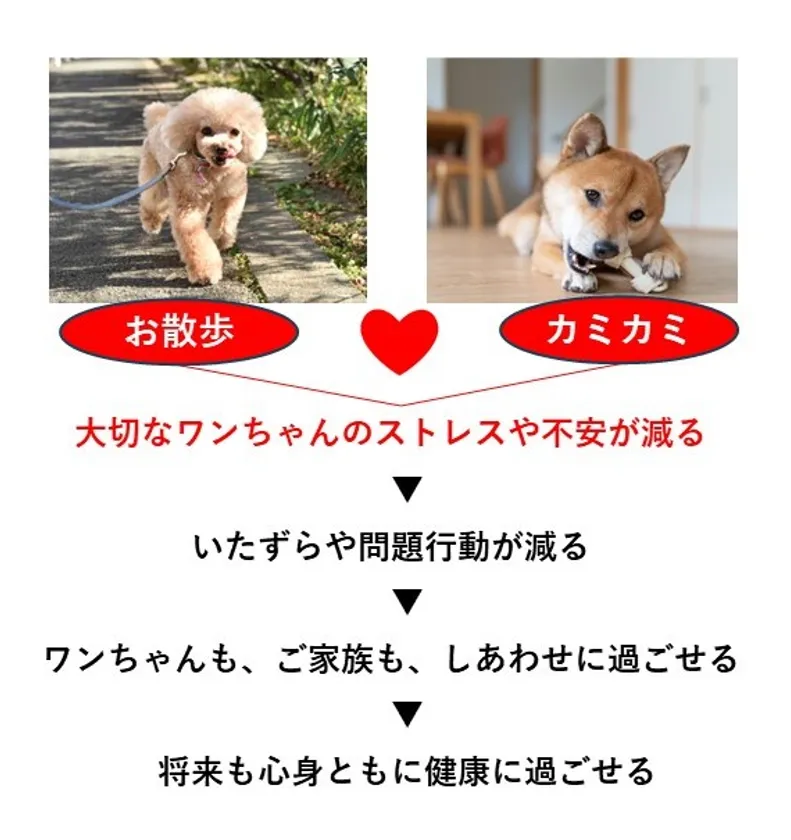
Walking and "long chewing" are two major habits.
(2) Can ningen just be healed? What are the "healing habits" that make dogs happy?
■Let's make "normal behavior as a dog" a habit. For the wellbeing of people and dogs.
First of all, as a prerequisite, let's take him for a daily walk to dissipate his energy well. What is even better to add is the "chewing habit.
By increasing the amount of time you can devote to chewing, you can satisfy your dog's need to release energy.
Based on the analysis of the data measured by Inupacy, we can say that the "chewing habit" is a good habit for dogs that keeps them happy for a long time and allows owners to easily provide excitement and focus without any pressure.
By increasing the amount of time they can be absorbed in the habit, you can satisfy your dog's need for diversion.
■ Unsurprisingly, the "cowhide gum" is a worldwide standard! Cowhide Gum" is the world's favorite wellbeing snack
Gum" has long been a favorite food for dogs. It is an item that can be expected to relieve stress in dogs, even for busy owners who have limited time to spend with their dogs, by causing excitement and concentration to satisfy their instincts and desires as dogs. In Germany, an advanced pet-owning country, 94% of dog owners give their dogs hard treats such as cowhide gum.
<The top 5 questions we asked dog owners about chewing gum
Q. I am worried that it is too hard.
Q. Can I defrost it? →A. Of course you can.
Q. I am worried about accidental ingestion.
Q. What is best for beginners? →A. Meat rolls are recommended.
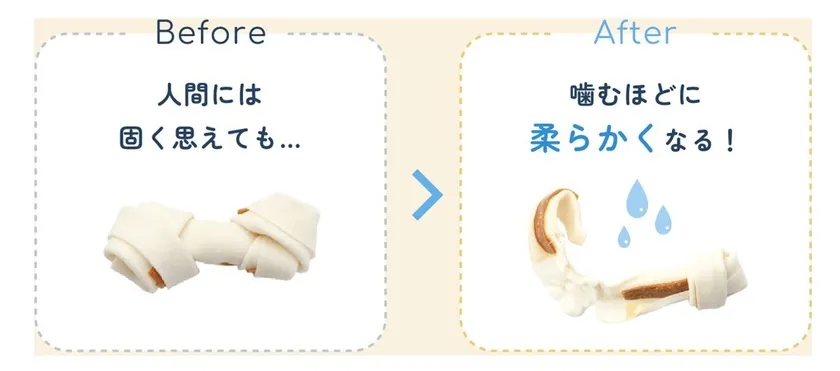
Bovine chewing gum is perfect for "chewing habit
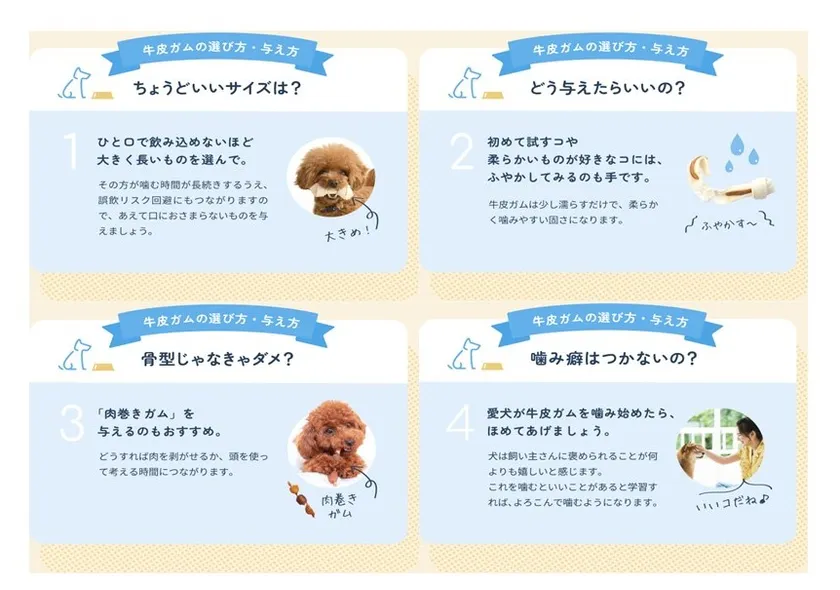
How to start a good "chewing habit
<Reference materials
Research Details
Period: April 12, 2024 - May 2, 2024
Number of subjects: 36 owner-dog pairs (30 dogs for which data could be collected were analyzed)
Dog breeds: 10 cases of very small dogs (under 5 kg), 13 cases of small dogs (5-10 kg),
Medium-sized dogs (11-24 kg): 6 cases, Over 25 kg: 1 case
Age :1 under 1 year old, 16 1-3 years old, 9 4-7 years old, 2 8-9 years old, 2 10 years old or older
Gender: 16 males and 14 females
Method: Conducted by owners at home
Method: Conducted by owners in their own homes:
Dogs and their owners were offered "cowhide gum," a treat provided by DINGO, and their heartbeat responses were obtained to measure their stress level and happiness level.
Studies have shown that chewing for a long time has a positive effect on dogs, and we measured and scientifically analyzed data on how the dog's heartbeat and each emotion changed when compared to the treats and play they use on a daily basis.
What is DINGO?
In 1997, DINGO was patented as the first gum with positive meat rolled into cowhide. Since its launch, DINGO has been loved by dogs and their owners around the world for its ability to maintain healthy teeth and gums and for its ease of eating.
For more information, please visit the DINGO brand page
https://spectrumbrands.jp/dingo/
Company name: Spectrum Brands Japan Co.
Location: HI Yokohama Building, 2-6-26 Kitasaiwai, Nishi-ku, Yokohama, Kanagawa 220-0004, Japan
URL : http://spectrumbrands.jp/
Business Description: Import and sales of products related to dogs, cats and small animals (Furminator, DINGO, etc.),
Import and sales of products related to ornamental fish keeping (TETRA, etc.)
Inquiries about DINGO: TEL: 045-322-4330
Langless Corporation Company Profile
Lungless is developing a revolutionary technology to visualize the mental activity of pets through Inupathy. This collar-type product, specially designed for pet dogs, analyzes the dog's heartbeat and displays five emotional states in colors and patterns to support communication between the owner and pet dog. Currently, we are providing the technology to research institutes, corporate product development departments, and trimming salons.
Company Name : Langless Co.
Representative: Kana Yamairibata, President
Headquarters : 1-16-3 Yokogawa, Sumida-ku, Tokyo 130-0003, Japan
Establishment : February 18, 2015
Business : Development and sales of bioinformation analysis through a wellable device exclusively for pet dogs
Inquiries about Inupacy: sales@inupathy.com
Lungless official website : http://langualess.com/
Inupacy official website : https://inupathy.com/
- Category:
- Research & Reports



